In 1931, Budapest erected a memorial or symbolic grave for the Hungarians that lay outside the national borders of Hungary. Symbolising the four cardinal points the memorial enclosed a square space, in which stood a motif taken from the national coat of arms, three hills and a double cross.
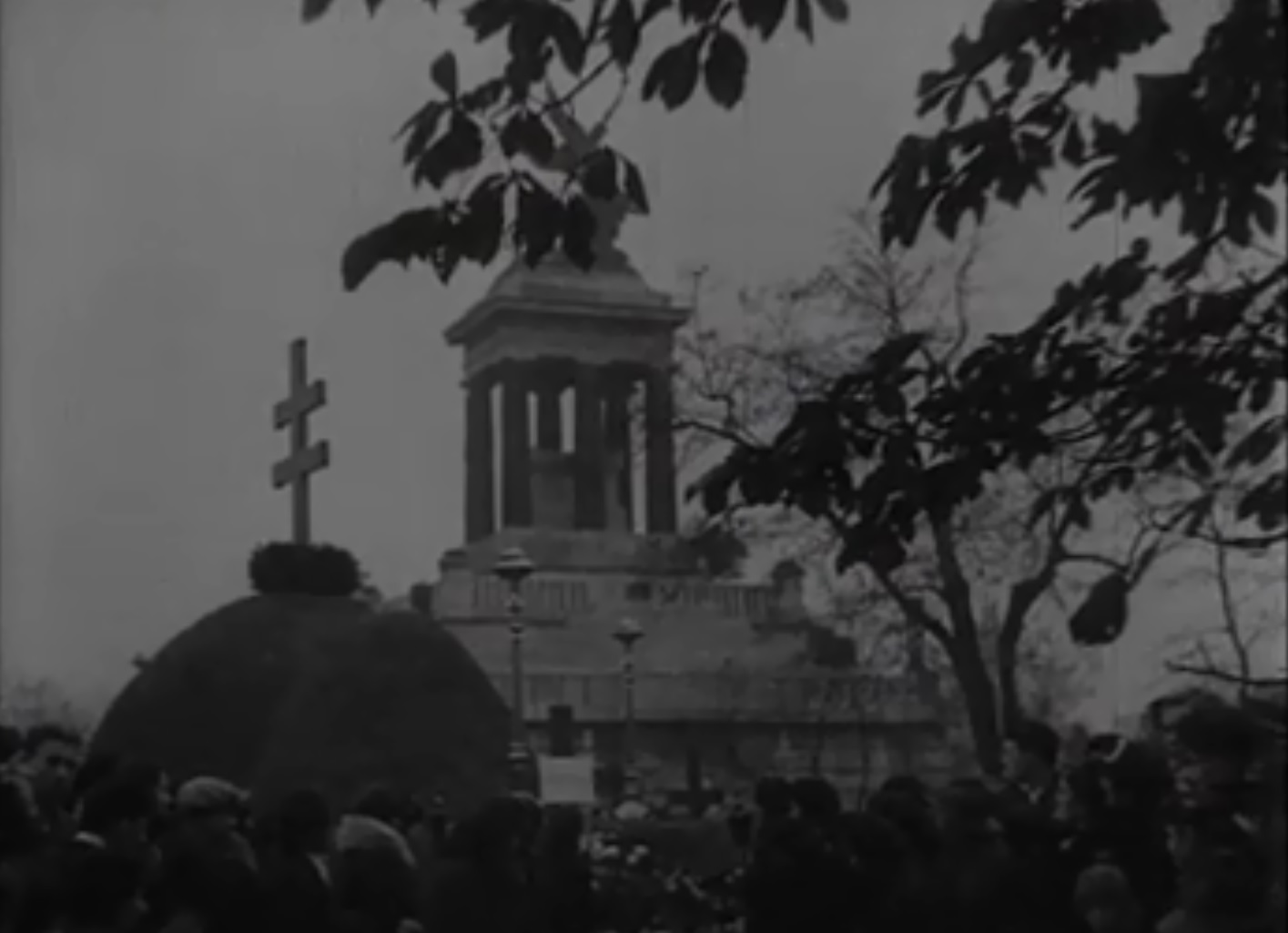
The memorial to Hungarian dead laid to rest outside the national borders once stood near the Kossuth Mausoleum in the Kerepesi Cemetery (Photo: Still from a contemporary newsreel)
While this monument and the four symbolic graves have been swept away by the vicissitudes of History, the Fiumei Road Cemetery still embodies a strong sense of national unity. Join Pestbuda on an All Souls' Day walk through the cemetery to commemorate those who have been buried here but were born outside of present-day Hungary.
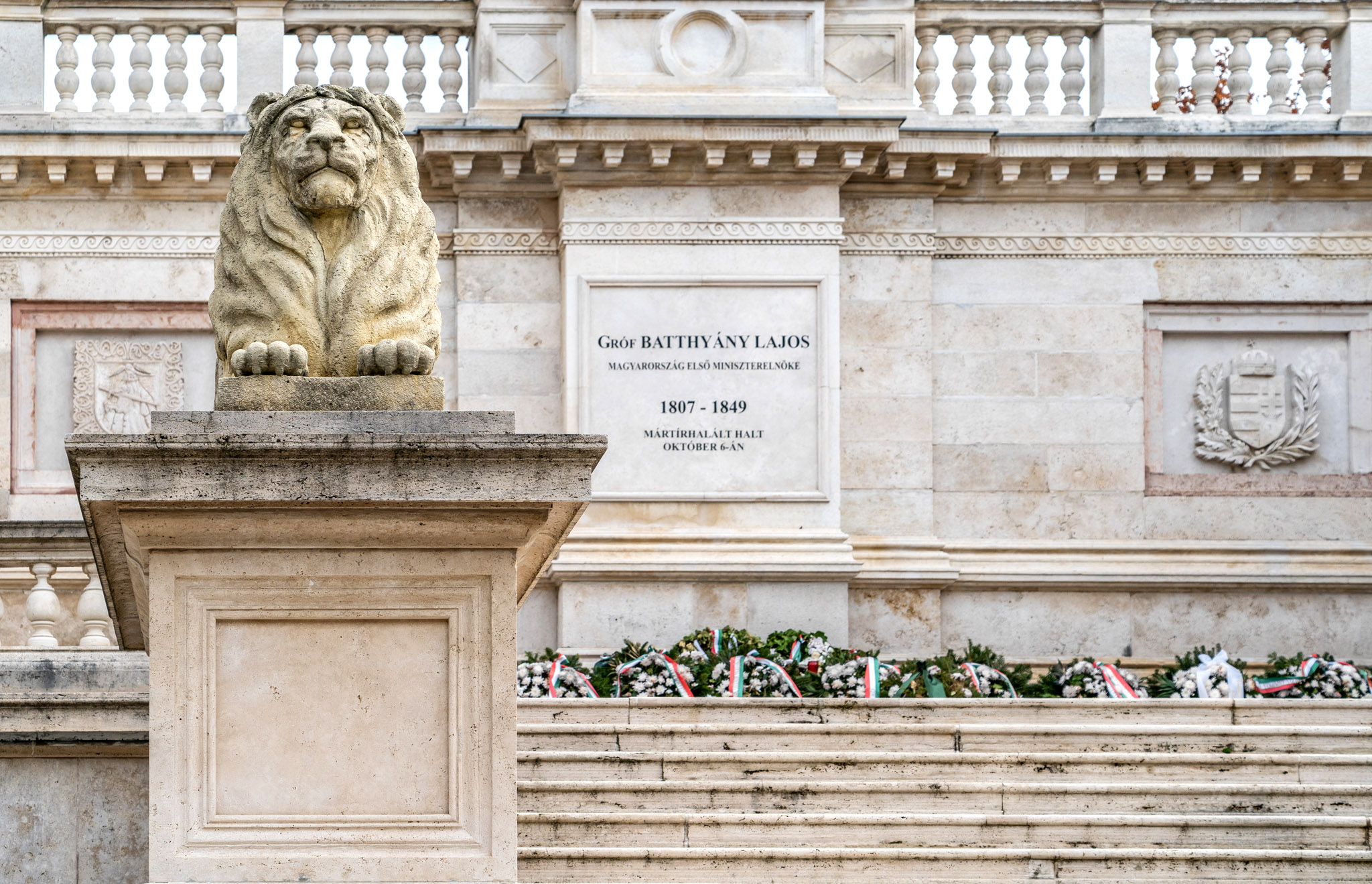
A multitude of fresh wreaths on the Batthyány Mausoleum mark the recent anniversary of Lajos Batthyány's, execution on 6th October 1849. The mausoleum was erected in 1874 and designed by Albert Schickedanz (Photo: Balázs Both/pestbuda.hu)
Lajos Batthyány, the first democratically elected prime minister of Hungary, was born in Pozsony (present-day Bratislava, Slovakia) which was at the time the capital of the country. After his execution, he was buried in the crypt of the Franciscan Church of Pest and only moved to the Kerepesi Cemetery in 1870, after the Austro–Hungarian Compromise. The Batthyány Mausoleum was built according to plans by Albert Schickedanz.
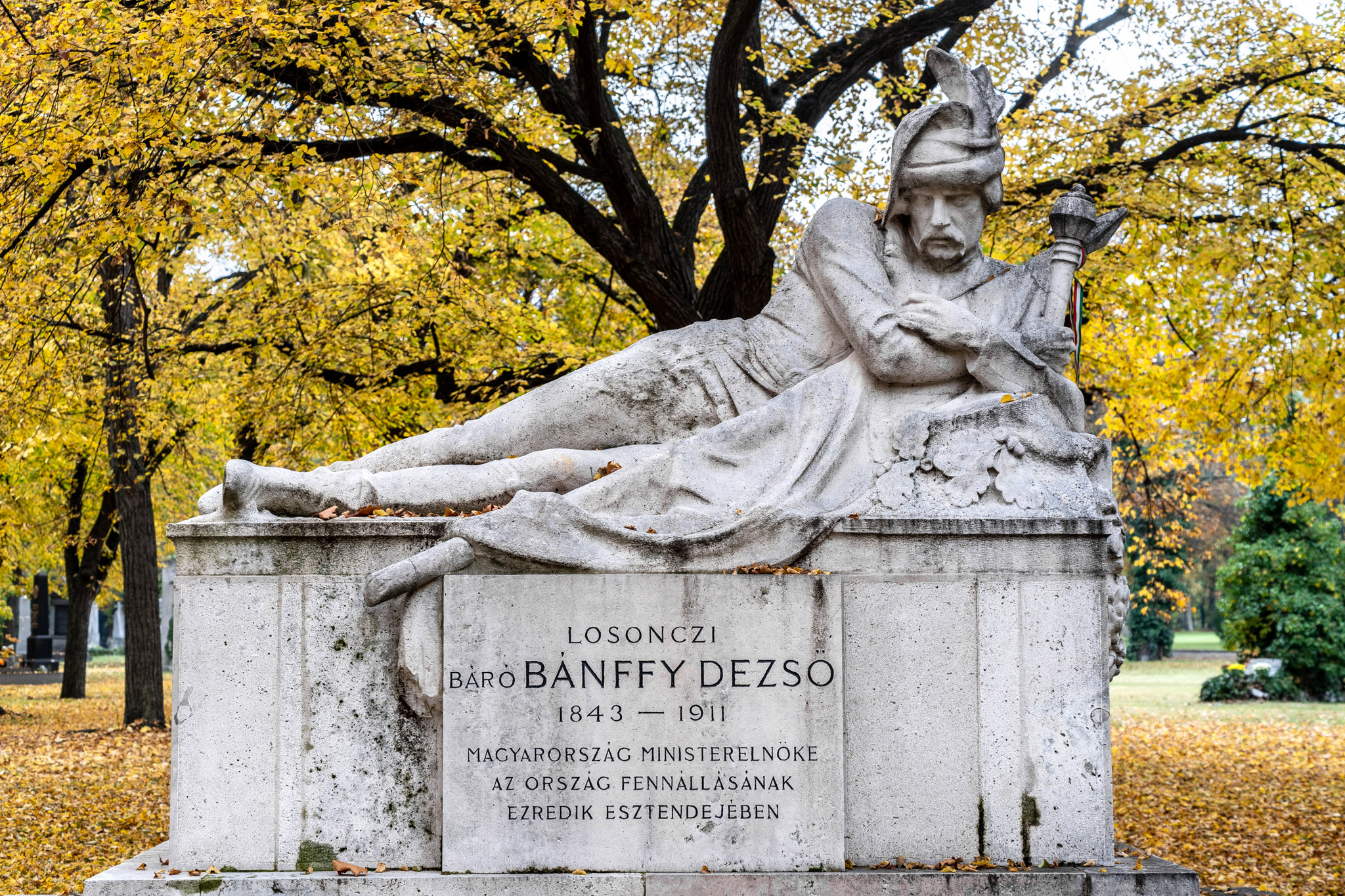
The grave of Prime Minister Dezső Bánffy was created by the sculptor Ede Kallós in 1914 (Photo: Balázs Both/pestbuda.hu)
Dezső Bánffy was a descendant of the old Bánffy de Losonc family and served as Prime Minister of the Kingdom of Hungary between 1895 and 1899. Dezső Bánffy was born in Kolozsvár (today Cluj-Napoca, Romania). A major site in the city, the Bánffy Palace was commissioned by the family and stands on the main square to the present day. Ede Kallós created the grave in 1914.
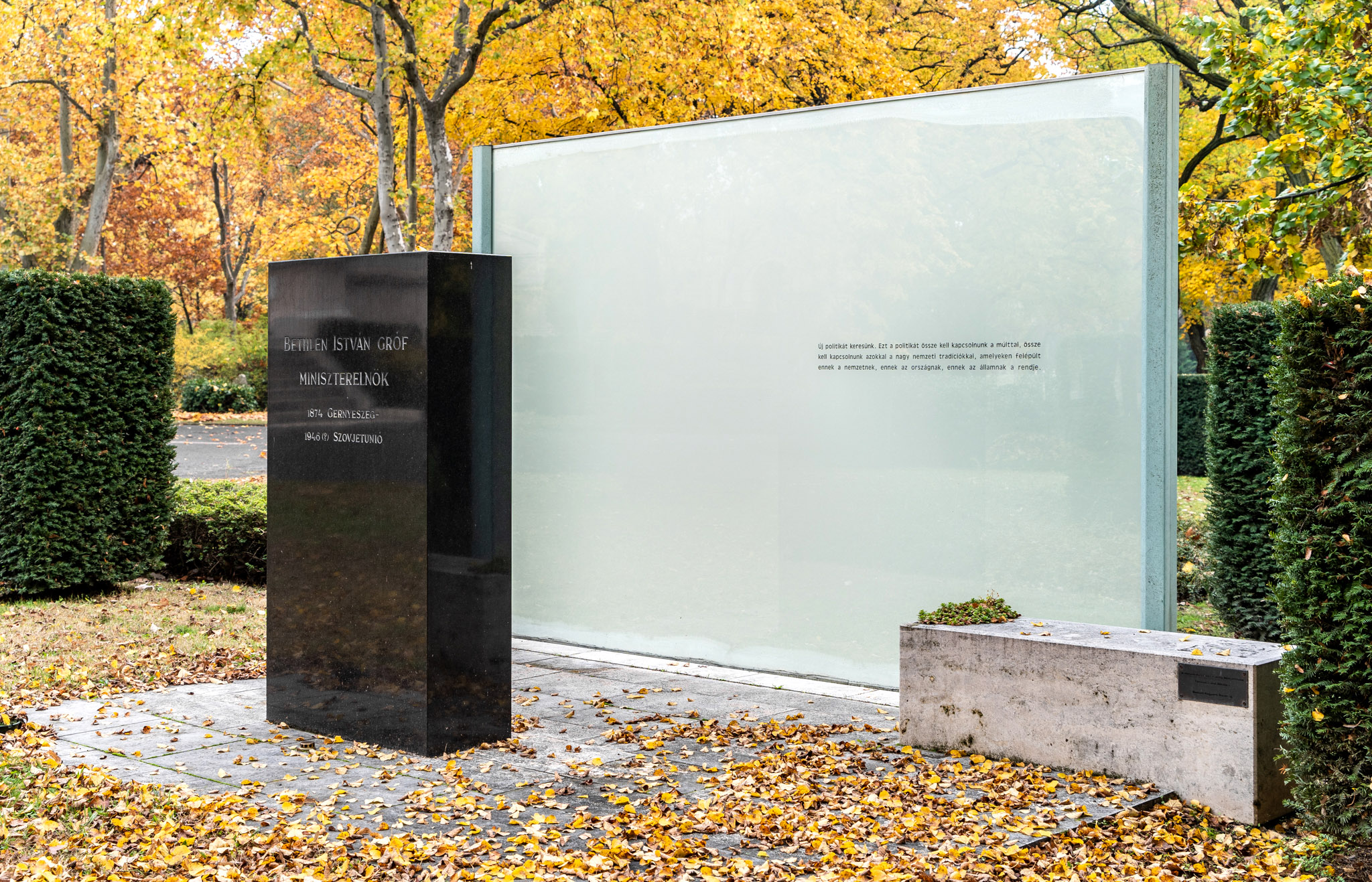
Balázs Almási designed the tomb of István Bethlen, the prime minister who was imprisoned in the Soviet Union and died there (Photo: Balázs Both/pestbuda.hu)
István Bethlen was born in Transylvania in the Teleki Palace of Gernyaszeg (now Gornești, Romania) 1874. He served as Prime Minister of Hungary from 1921 to 1931. His mother was Ilona Teleki. The Bethlen and Teleki families were both influential aristocratic families of Transylvania. Bethlen was arrested and taken to the Soviet Union in 1945, where de died in Moscow in 1946. His ashes were only recovered in 1989 and returned to Hungary in 1994. He was laid to rest in the Fiumei Road Cemetery, and a memorial was erected above his grave in 2001, designed by Balázs Almási.
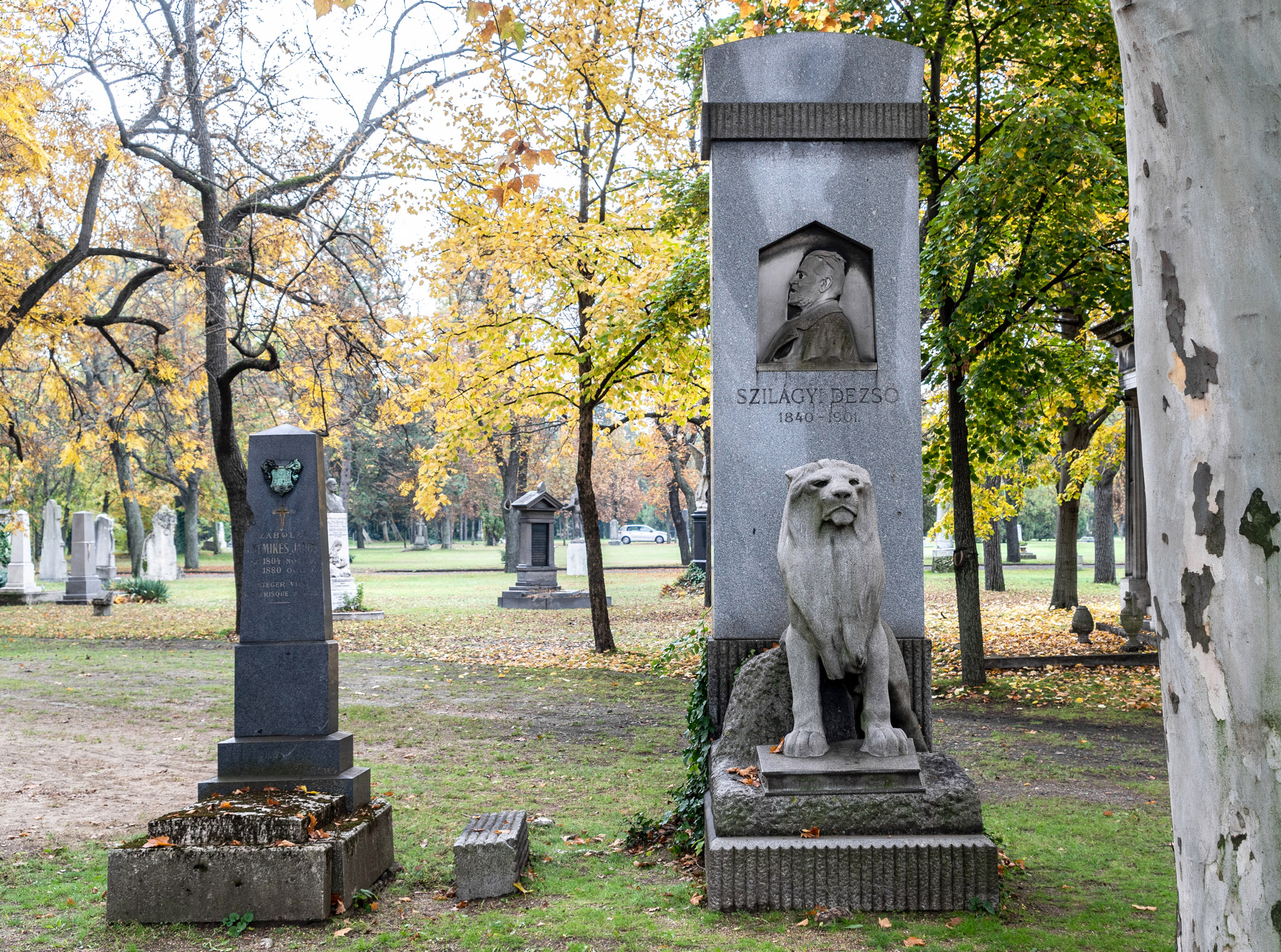
Tomb of Dezső Szilágyi, designed by Alajos Strobl, 1908 (Photo: Balázs Both/pestbuda.hu)
Dezső Szilágyi, former Minister of Justice and a member of the Hungarian Academy of Sciences was born in Nagyvárad (Oradea, Romania) in 1840. He was a member of parliament for both Gyulafehérvár (Alba Iulia, Romania) and Pozsony (in different terms, naturally). His memorial was erected in 1908 and created by Alajos Strobl.
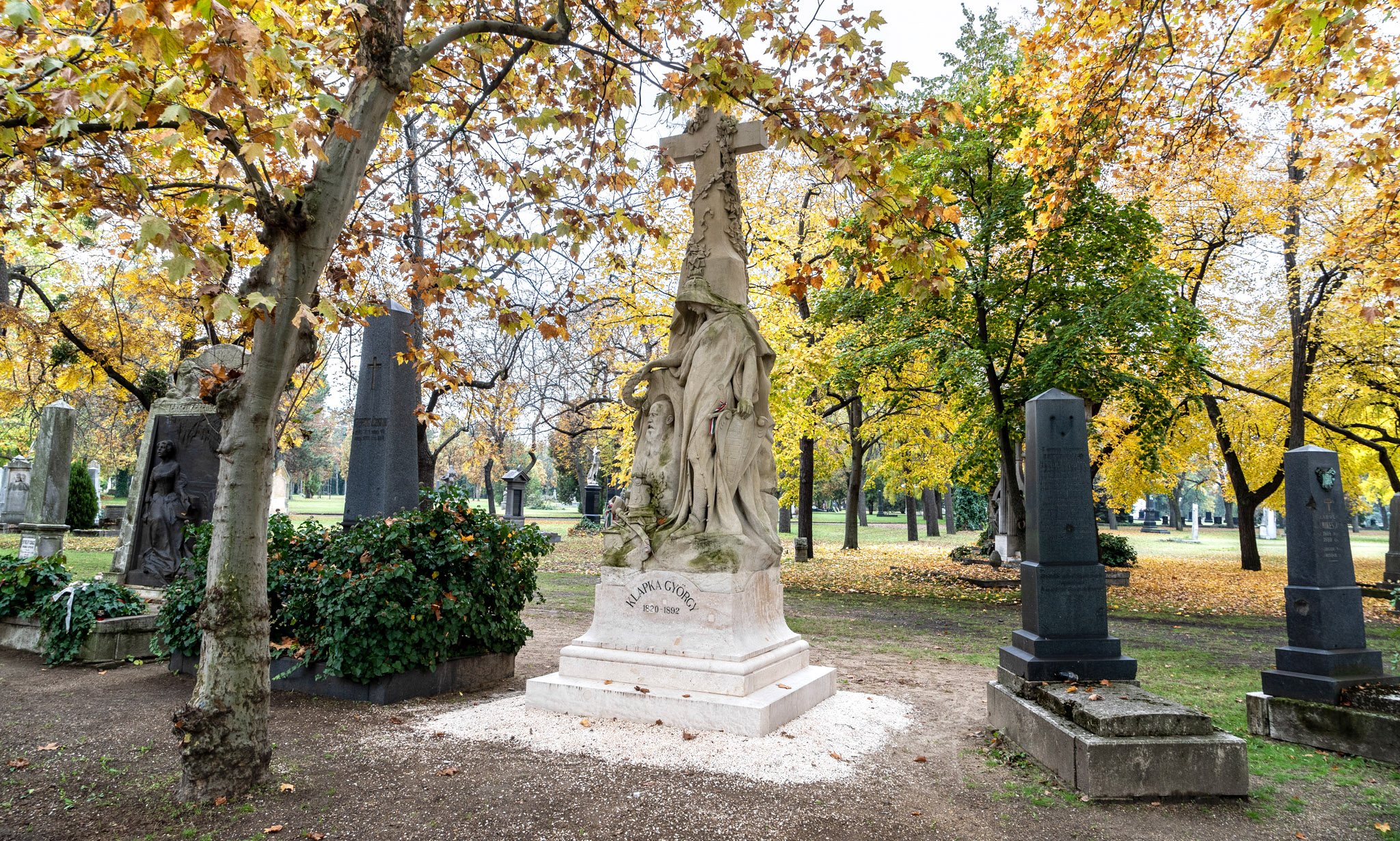
György Klapka's grave. József Róna, 1892 (Photo: balázs Both/pestbuda.hu)
A general of the 1849–49 war of independence, György Klapka was born in 1820 in Temesvár (Timisoara, Romania). His family had deep roots in the city, and his father served as mayor between 1819 and 1833. As the commander of the fortress of Komárom, his figure is tied to not only Bánat but Upper Hungary (modern-day Slovakia). His grave was built in 1892 and designed by József Róna.
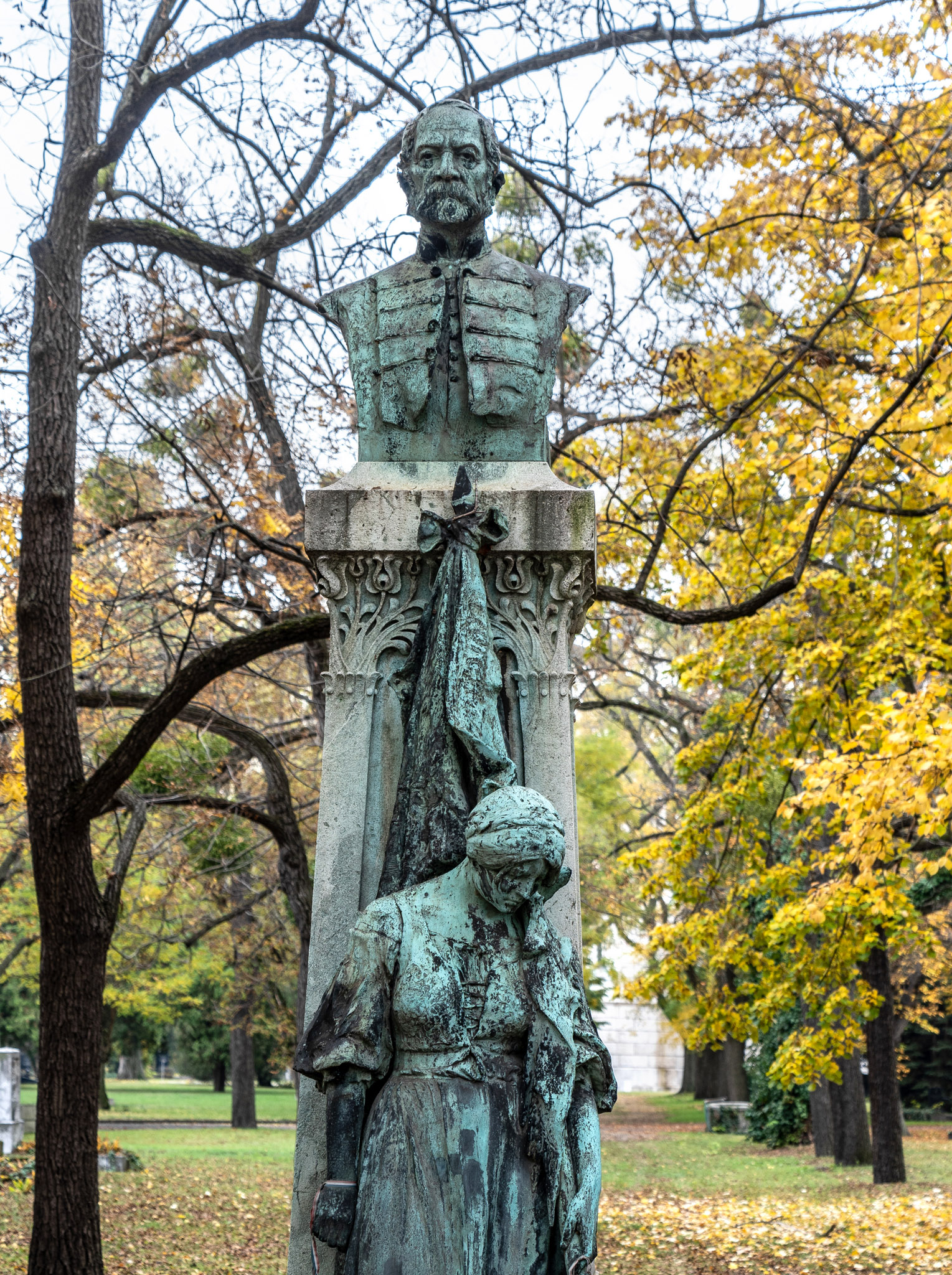
Ede Kallós designed the tomb of Dániel Irányi in 1901 (Photo: Balázs Both/pestbuda.hu)
A leading youth of the March 1848 revolution, Dániel Irányi was born in the Northern-most tip of historical Hungary in Toporc (Toporec, Slovakia) within Szepes County. Born with the name Dániel Halbschuh he studied in the towns and cities of northern Hungary Eperjes (Prešov, Slovakia), Késmárk (Kežmarok, Slovakia) and Rozsnyó (Rožňava, Slovakia) before arriving in Budapest. The memorial erected in 1901 was designed by the sculptor Ede Kallós and the architects Zoltán Bálint and Lajos Jámbor.
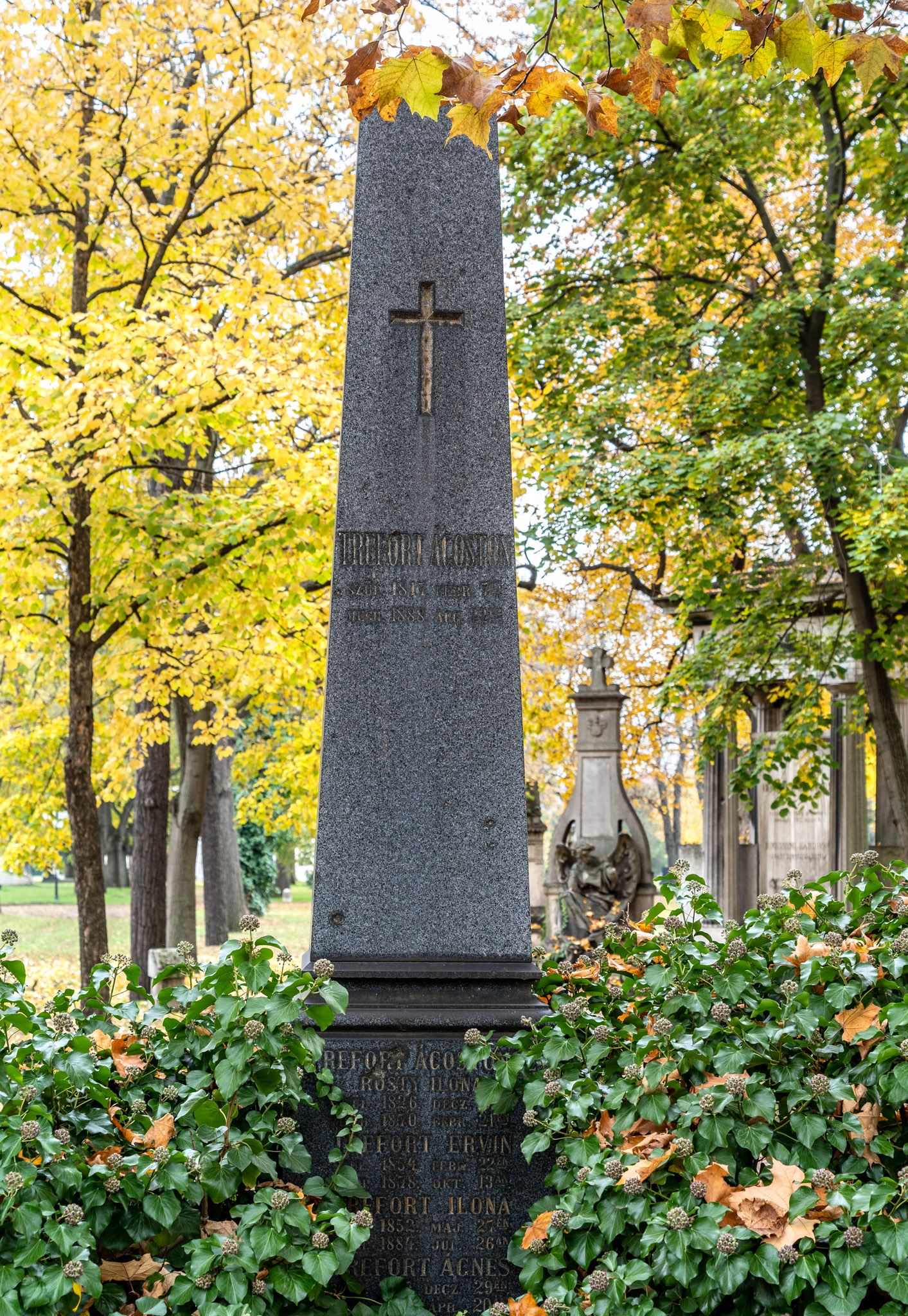
Ágoston Trefort's grave (Balázs Both/pestbuda.hu)
Homonna lies in the eastern reaches of Upper Hungary near Kassa (Košice, Slovakia) and Eperjes. The small settlement in Zemplén county was where Ágoston Trefort, former Minister for Education and Religion and President of the Hungarian Academy of Sciences was born in 1817. The family grave is marked with a simple obelisk.
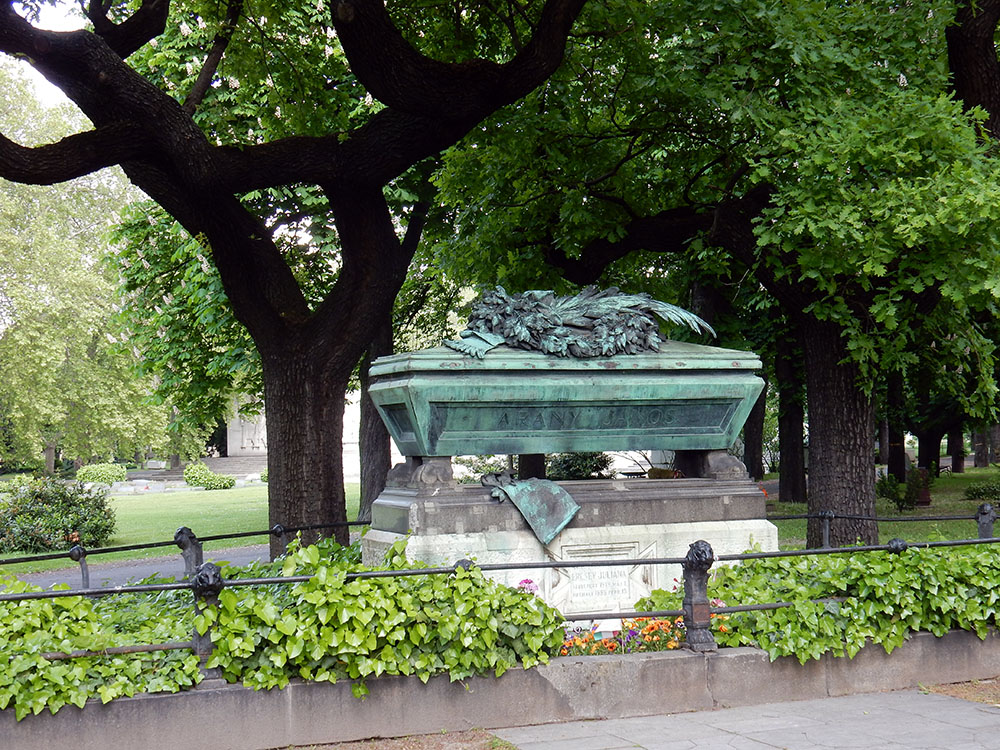
The tomb of János Arany by Alajos Strobl, 1885 (Photo Balázs Both/pestbuda.hu)
János Arany, one of Hungary's greatest poets, was born in Nagyszalonta (Salonta, Romania) what once was the Partium. While today the Partium is often classified as a part of Transylvania, it is in fact more a continuation of the Great Plain. Nagyszalonta has always been a centre of Hungarian culture. It is here that the hero, Miklós Toldi, immortalised in verse by János Arany, lived in the 14th century, and the city was home to many Hungarian greats, from János Arany to István Sinka.
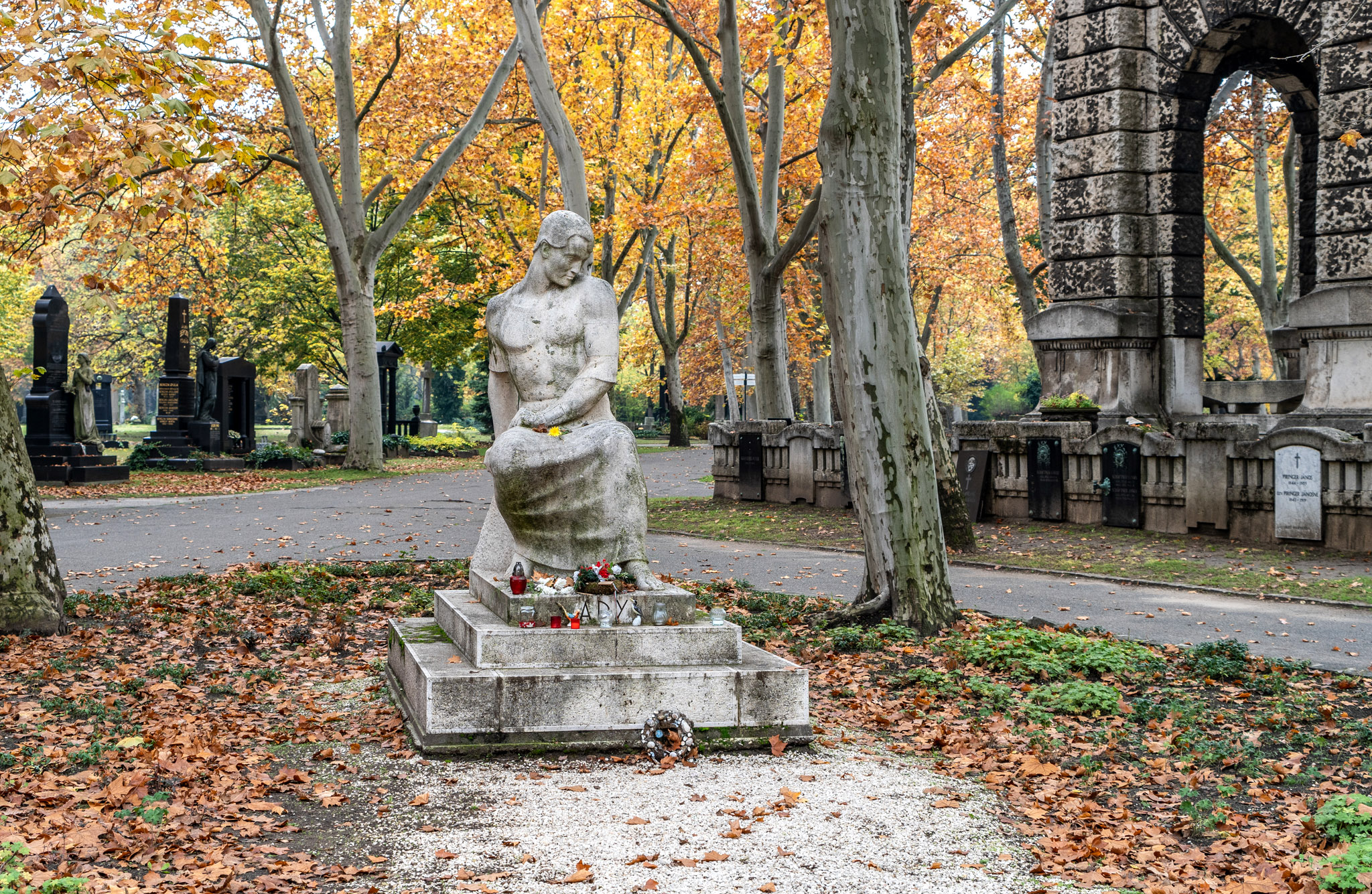
Endre Ady's tomb – the work of sculptor Géza Csorba was erected in 1930 (Photo: Balázs Both/pestbuda.hu)
Another great poet was also born in the Partium: Endre Ady. The poetic genius was born in Érmindszent (the village was later renamed in honour of the poet and is called Ady Endre in Romania to the present day) and lived in Nagyvárad (Oradea) for years. The tomb was erected in 1930 following plans by Géza Csorba.
The memorial of Mór Jókai was finished in 1928 (Photo: Balázs Both/pestbuda.hu)
A master of Hungarian prose was also born beyond the present borders of Hungary. Mór Jókai saw the light of day in 1825 on the north bank of the Danube in the town of Komárom (the Slovakia half of the town is now called Komarno). His tomb was designed by the architect Jenő Kismarty-Lechner and the sculptor Richárd Füredi and was completed in 1928. The art-nouveau memorial surrounds the grave, as Jókai requested that no tombstone be placed on his grave.
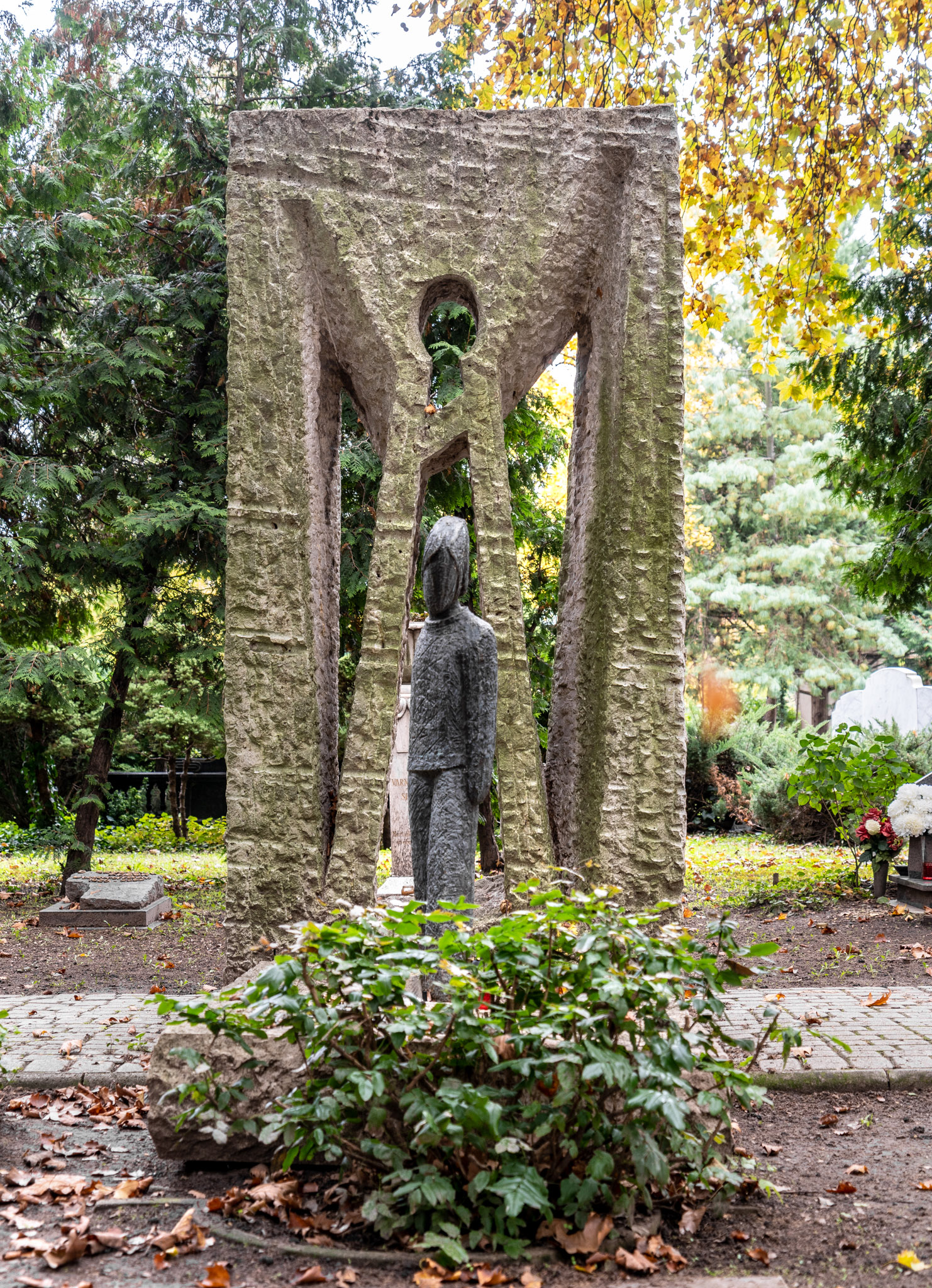
Dezső Kosztolányi lies under the statue by András Ősze, 1986 (Photo Balázs Both/pestbuda.hu)
Dezső Kosztolányi is a definitive figure of Hungarian prose and verse. He was born in Szabadka, known as Subotica in modern-day Serbia in 1885. However, his family also had ties to Upper Hungary, as the Nemeskosztolányi name his family bore can be derived from the settlement Nemeskosztolány (Zemianske Kostoľany, Slovakia), which is located not far from Trencsén (present-day Trenčín, Slovakia). The sculpture was erected in 1986 and refers to a famous poetry cycle written by Kosztolányi, The complaints of a poor child.
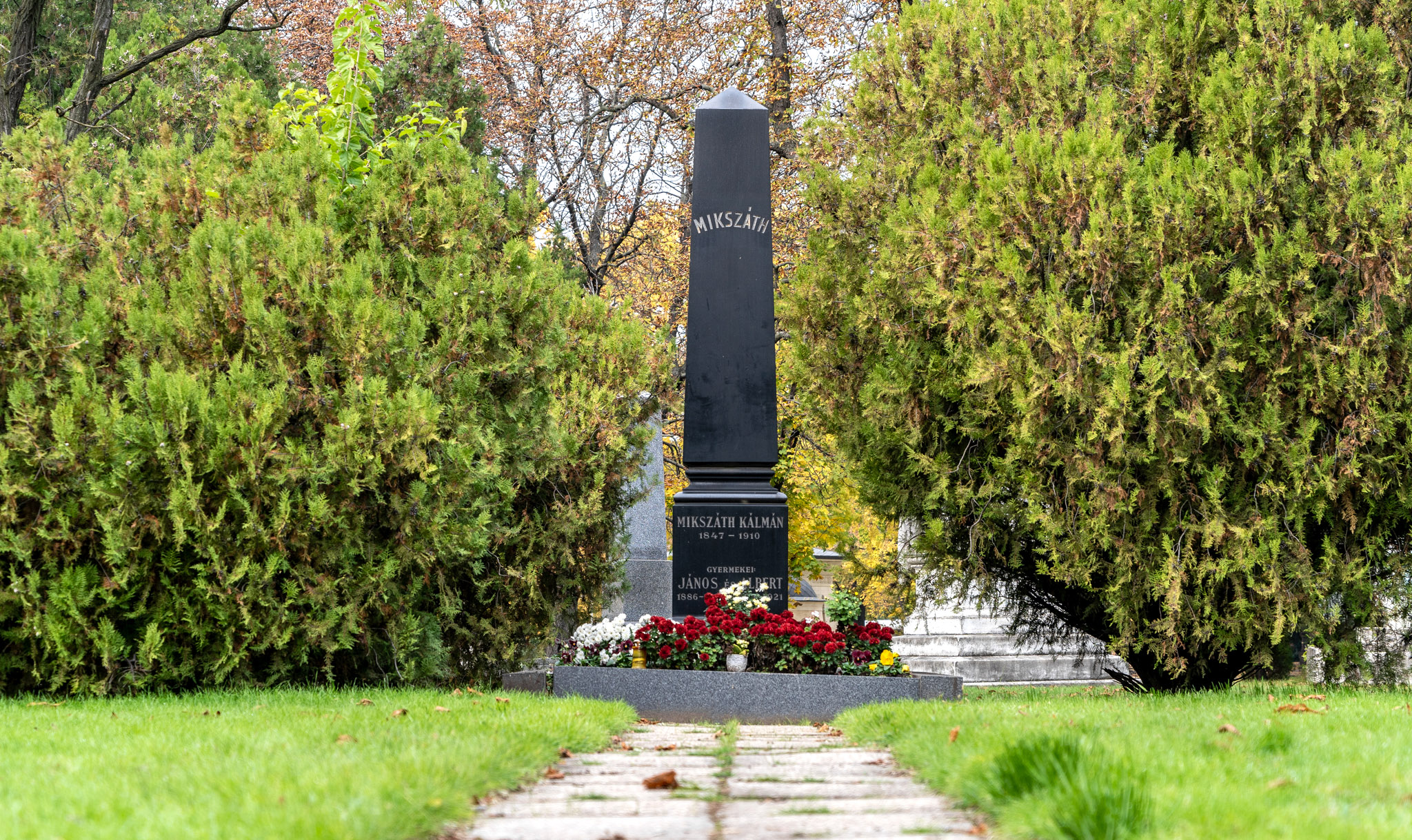
Tomb of Kálmán Mikszáth (Photo: Balázs Both/pestbuda.hu)
The land of the Palóc was also divided by Trianon. The "greatest palóc", Kálmán Mikszáth was born in an area of Nógrád county that is no longer in Hungary. The grave of the writer born in Szklabonya (Sklabiná, Slovakia) in 1847 is marked with a simple, dignified black obelisk.
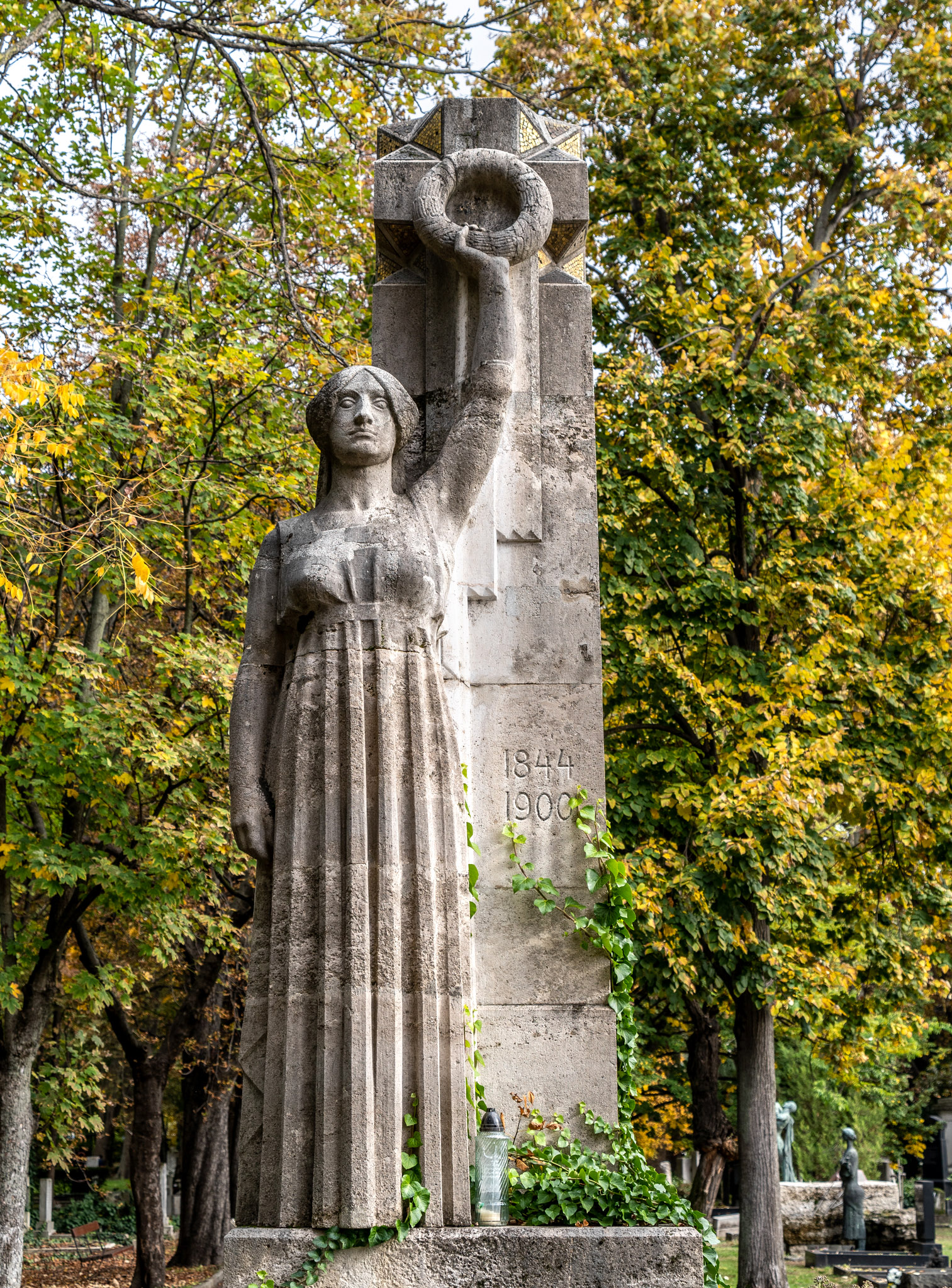
Mihály Munkácsy's grave. Designed by Ede Telcs in 1911 (Photo: Balázs Both/pestbuda.hu)
The only Transcarpathian in this list, the painter Mihály Munkácsy was born as Mihály Lieb in Munkács. Hungarians in the region today are also affected by the political difficulties of the country. Ede Telcs designed the tombstone in 1911.
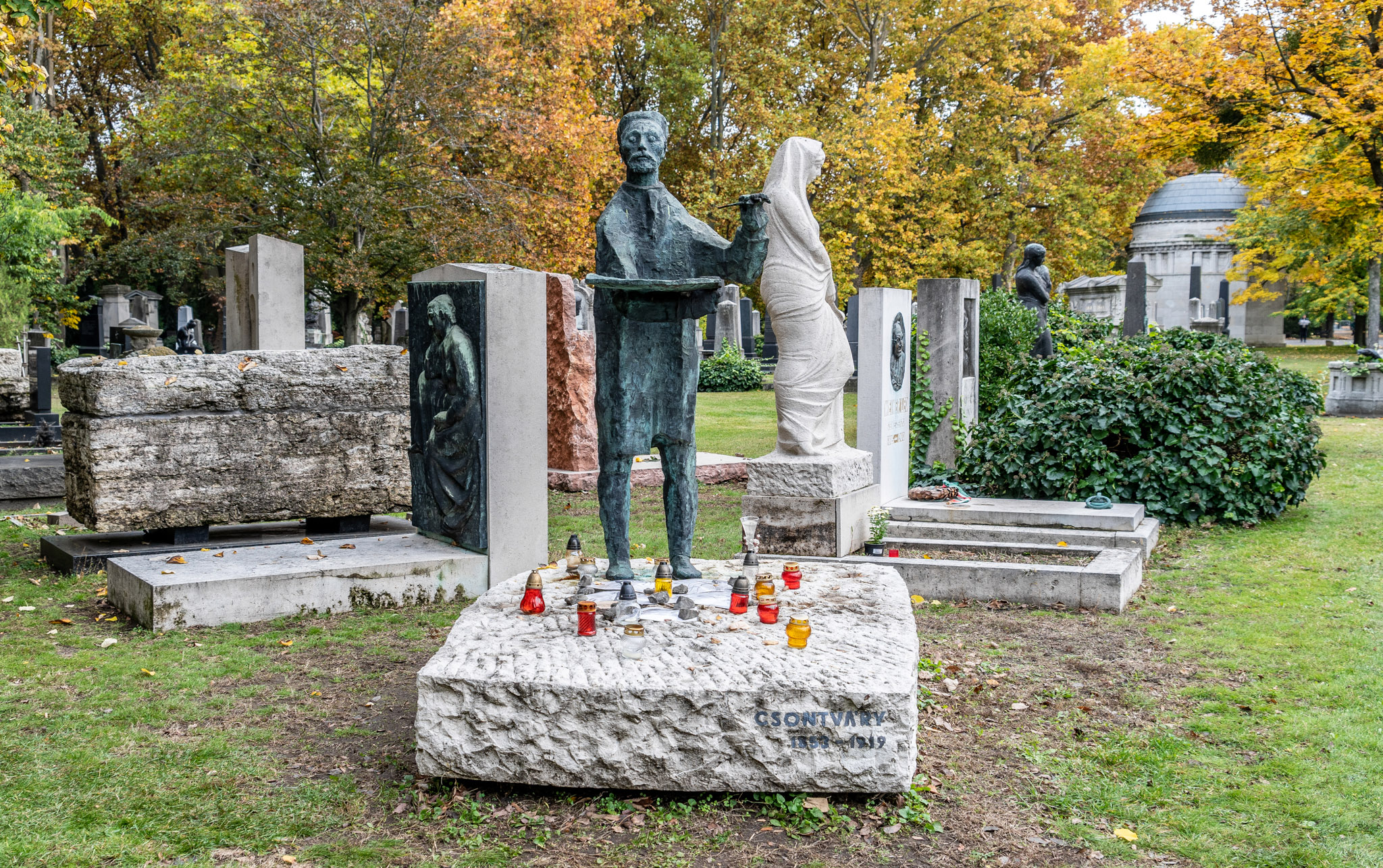
Symbolic tomb for Tivadar Kosztka Csontváry, designed by Jenő Kerényi, 1967 (Photo: Balázs Both/pestbuda.hu)
The painter Tivadar Kosztka Csontváry was born in Kisszeben (Sabinov, Slovakia) in Upper Hungary in 1853. The landscape of what was then northern Hungary played a major role in his work. His landscapes of Selmecbánya (Banská Štiavnica, Slovakia), and the High Tatras are especially well-known. The significance of his oeuvre was recognised so late that his grave in Óbuda Cemetery was exhumed at the end of its lease. As a result, only a symbolic tomb stands for the great painter in the Fiumei Road Cemetery. Designed by Jenő Kerényi, it was erected in 1967.
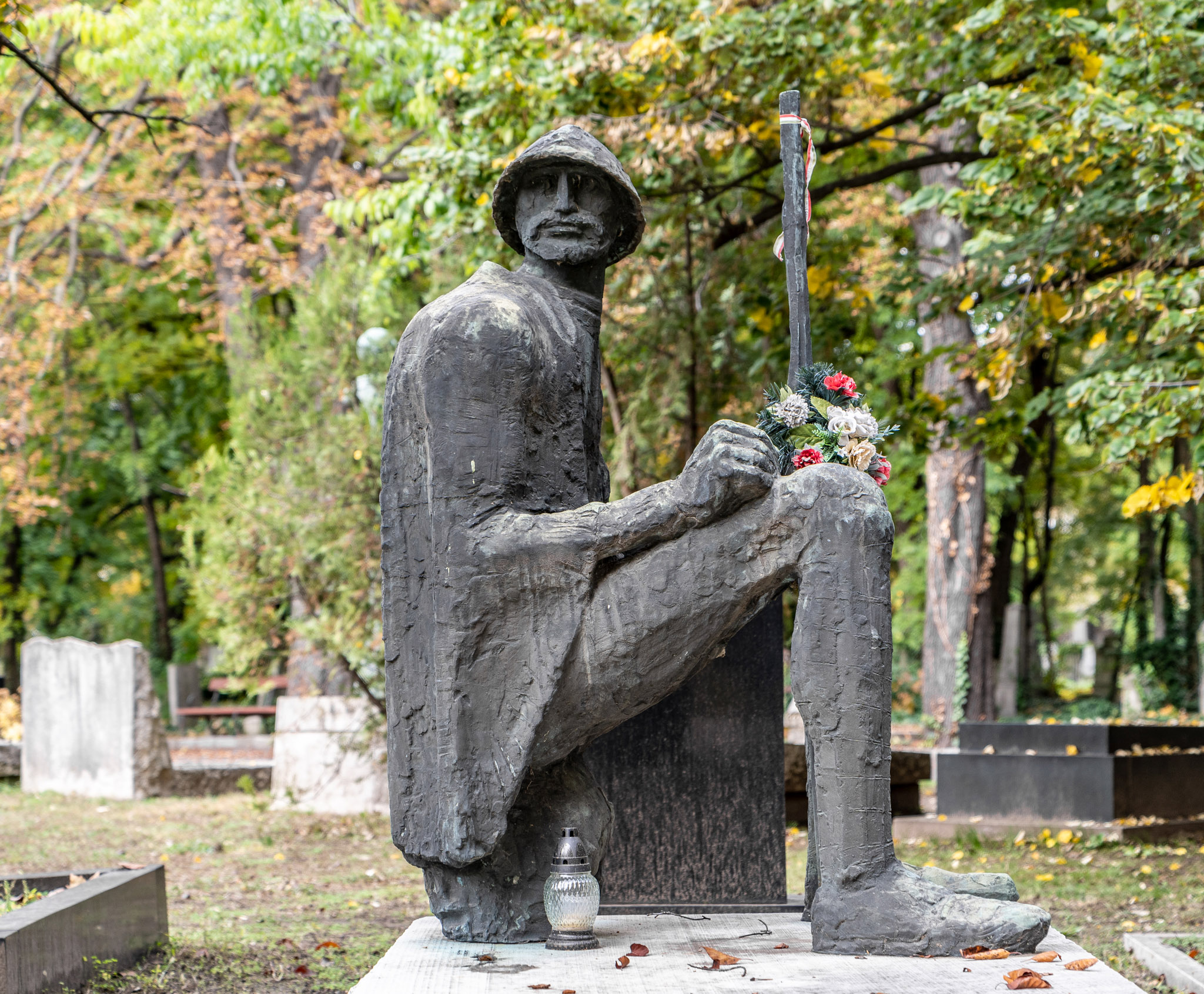
Memorial of László Mednyánszky. Work by József Somogyi from 1970 (Photo: Balázs Both/pestbuda.hu)
László Mednyánszky could be considered the "painter of the Tatras" because of his landscapes of Northern Hungary. The painter was born in Beckó (Beckov, Slovakia) in 1852, into one of the oldest Hungarian noble families. His tombstone by József Somogyi was erected in 1970.
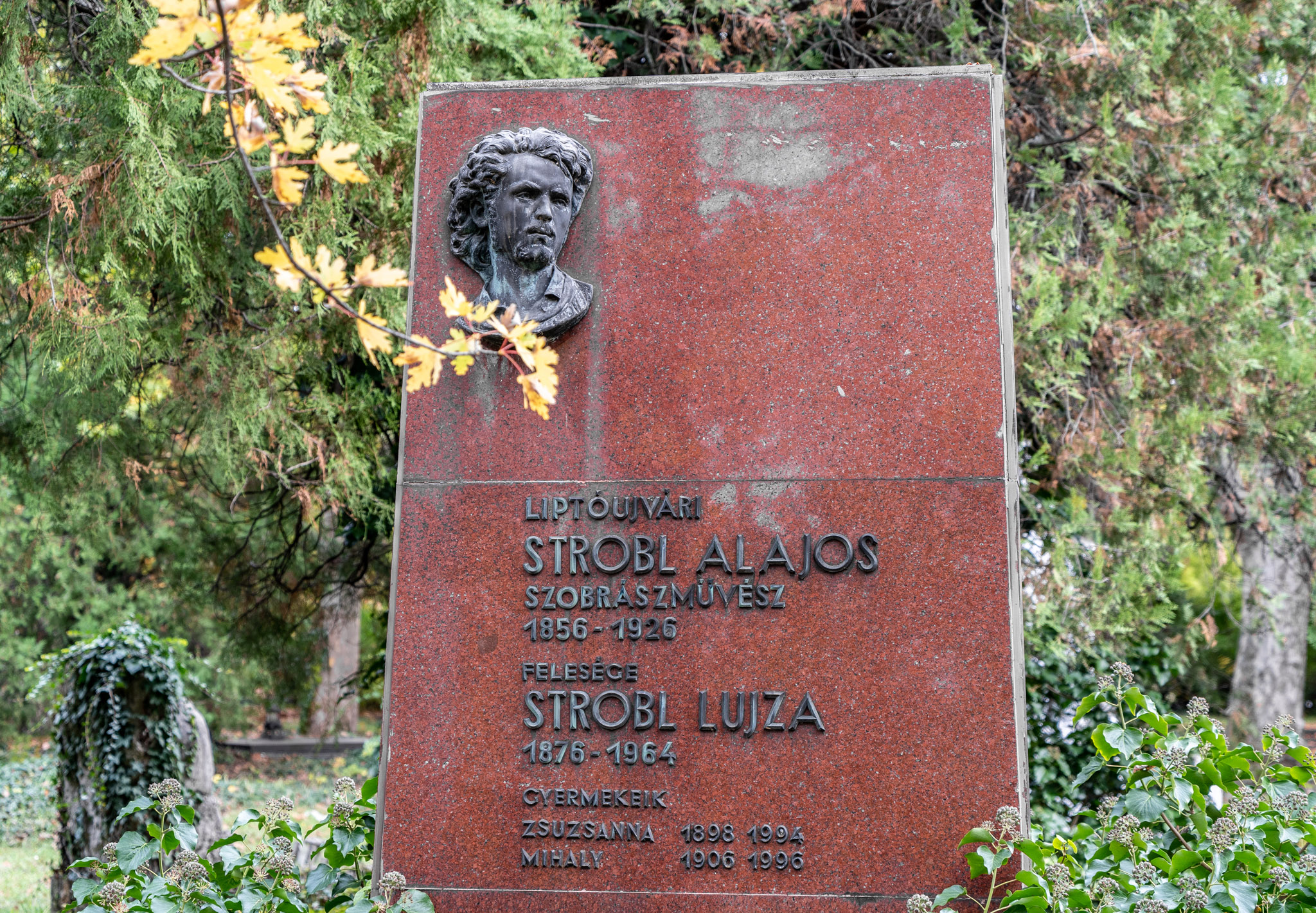
Tomb of Alajos Strobl. By Egon Pfannl, 1971 (Photo: Balázs Both/pestbuda.hu)
The famous Hungarian sculptor, Alajos Strobl, was also born in Upper Hungary. His hometown, Liptóújvár (Liptovský Hrádok), lay in Liptó County. A mortar shell destroyed the original memorial erected above his grave during World war II. The new red granite tomb was erected in 1971 following a design by Egon Pfannl.
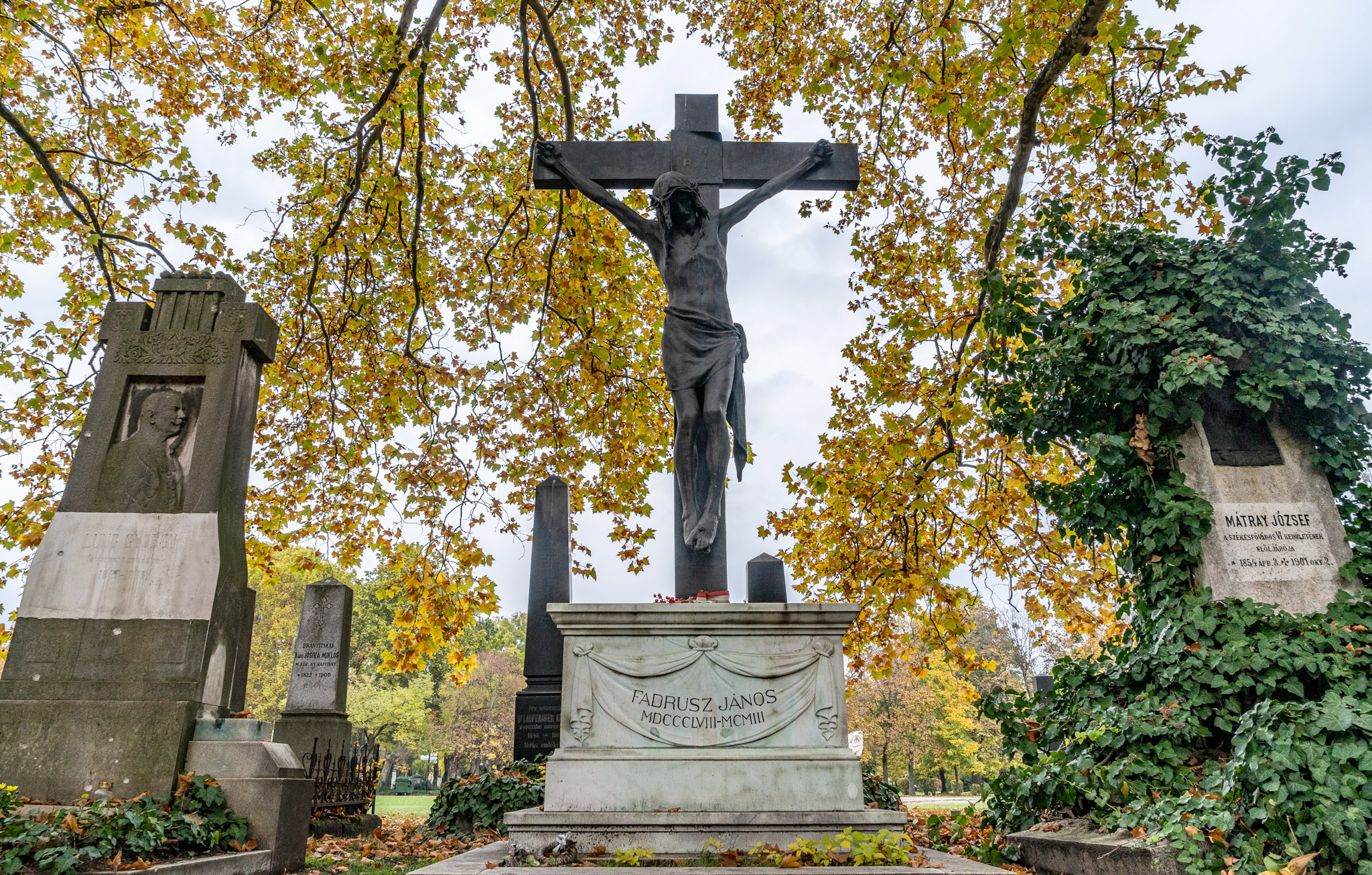
The grave of János Fadrusz is marked with the sculptor's own work, the Fadrusz Crucifix (Photo: Balázs Both/pestbuda.hu)
A major figure of 18th-century historical sculpture, János Fadrusz, was also born in Pozsony in 1858. He also created the famed Matthias statue that stands on the main square of Cluj Napoca. His grave is marked with his own work, the famed Fadrusz Crucifix.
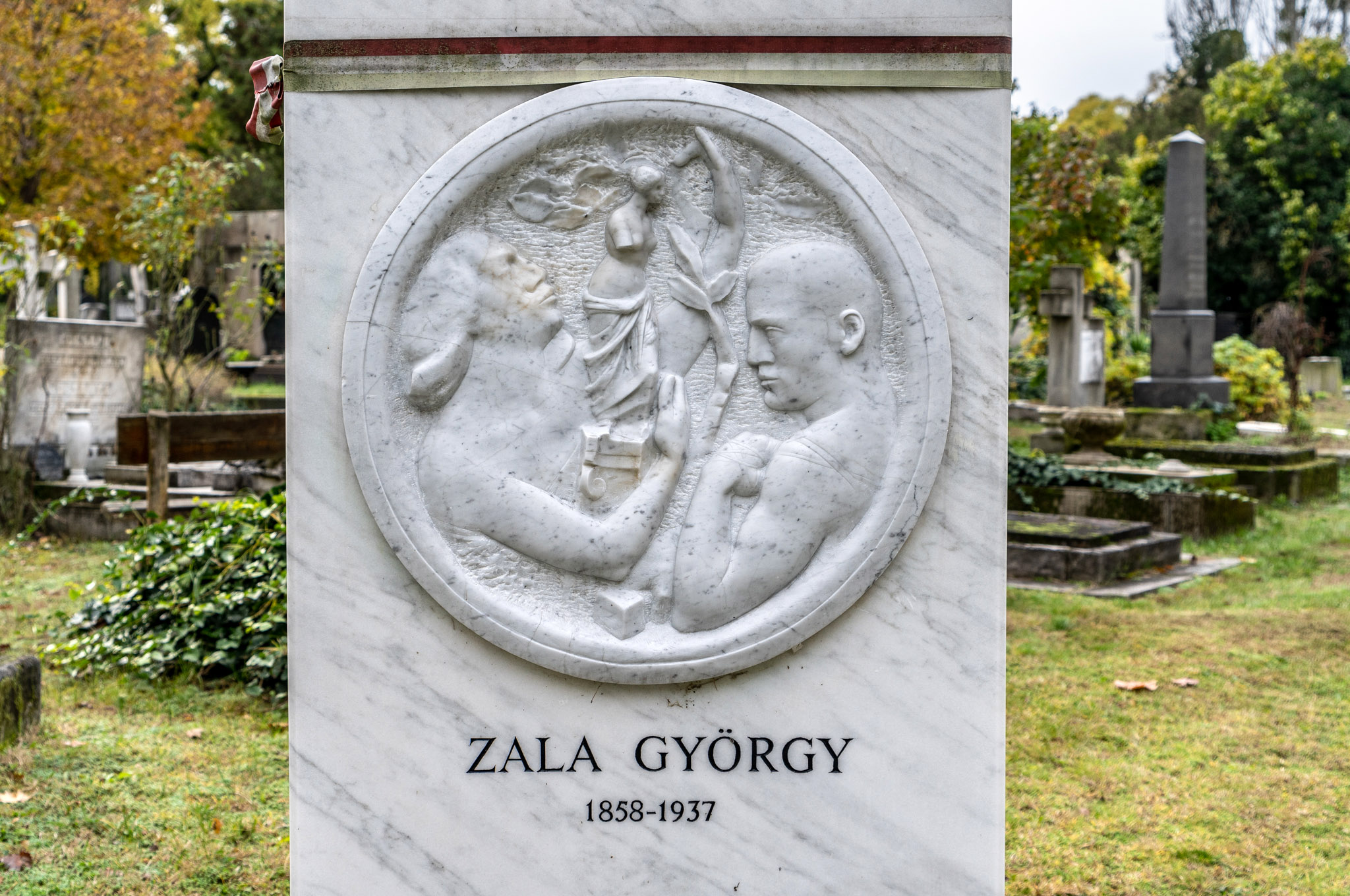
The grave of György Zala is marked by a relief by Miklós Ligeti, 1968 (Photo Balázs Both/pestbuda.hu)
György Zala, a major Hungarian sculptor, was born in a part of Historical Hungary that he alone represents in this list. Alsólendva (Lendava) of Zala County is today a part of Slovenia. The memorial erected in 1968 houses a relief by Miklós Ligeti.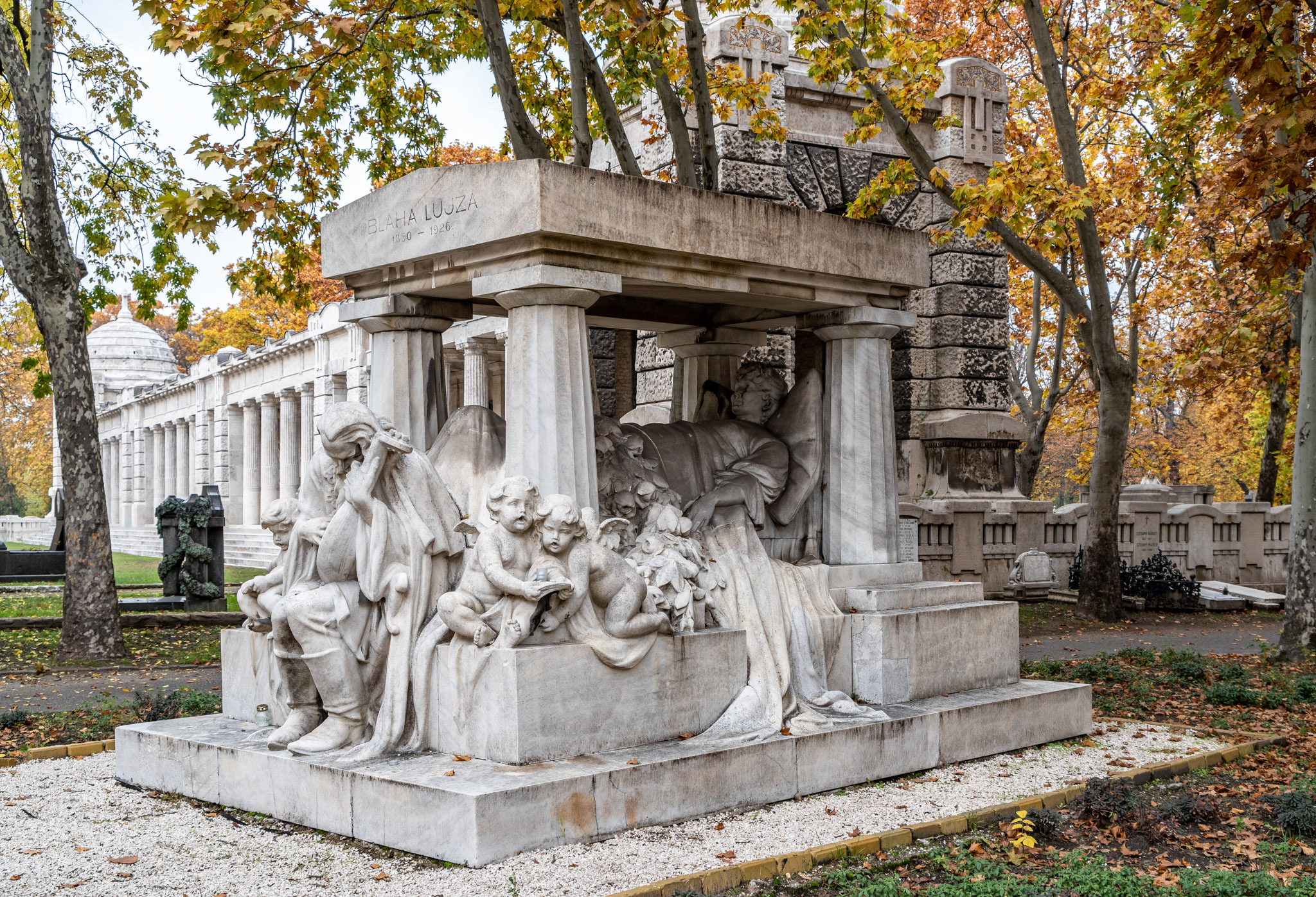
Elemér Fülöp created the tomb of Lujza Blaha in 1929 (Photo: Balázs Both/pestbuda.hu)
The famed actress, Lujza Blaha was born in Rimaszombat (Rimavská Sobota, Slovakia) with the name Ludovika Reindl. Her parents were members of a travelling troupe and were performing in the town at the time. The grave by Elemér Fülöp was erected in 1929.
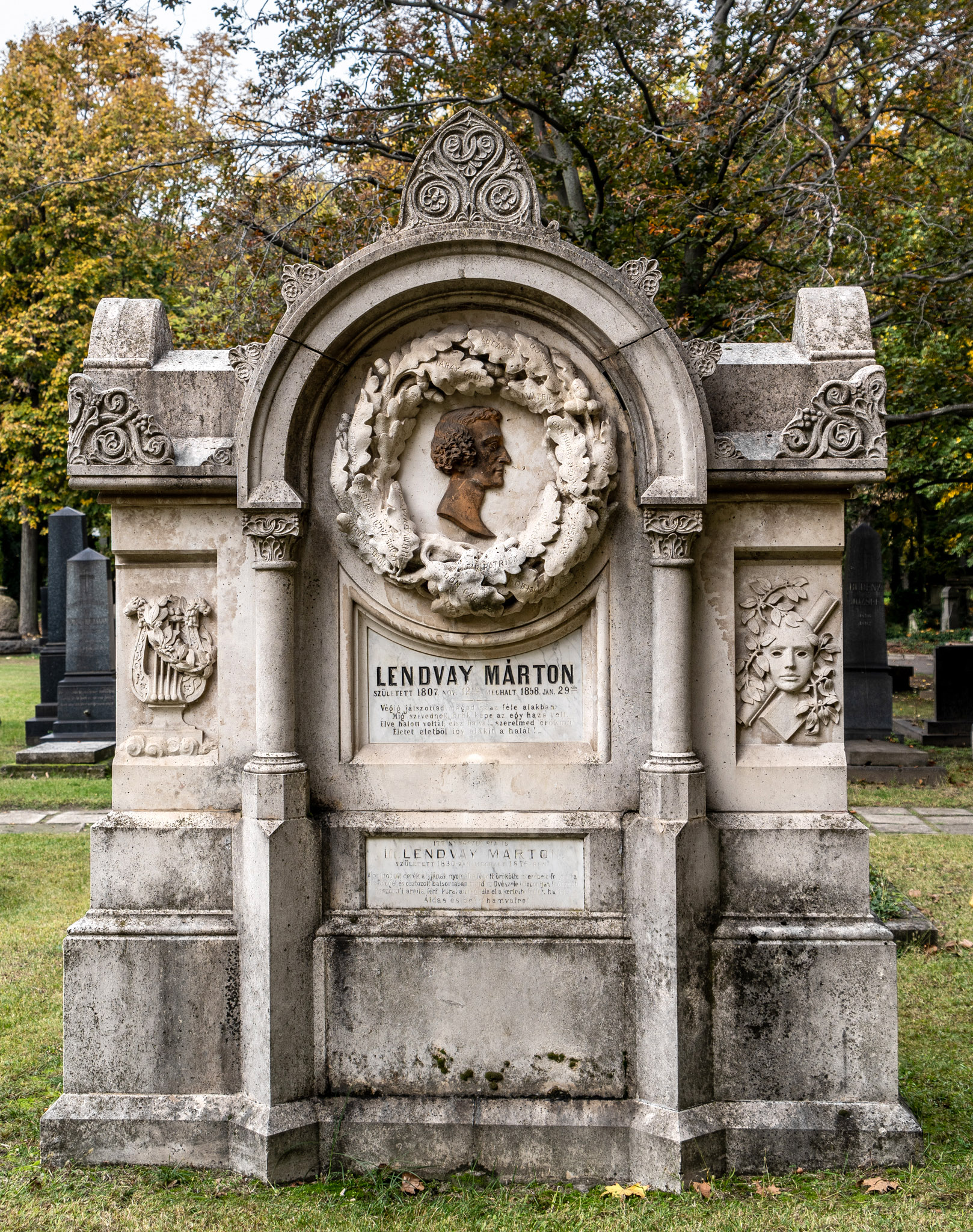
Márton Lendvay and his son, Márton Lendvay, Jr. are commemorated with a tomb by sculptor László Dunaiszky and architect Frigyes Feszl, erected in 1859 (Photo: Balázs Both/pestbuda.hu)
Two prominent figures of 19th-century stage acting Márton Lendvay and his son of the same name are commemorated with a joint tomb by the sculptor László Dunaiszky and the architect Frigyes Feszl. The elder actor was born in Nagybánya (today Baia Mare, Romania), while his son was born in Kolozsvár.
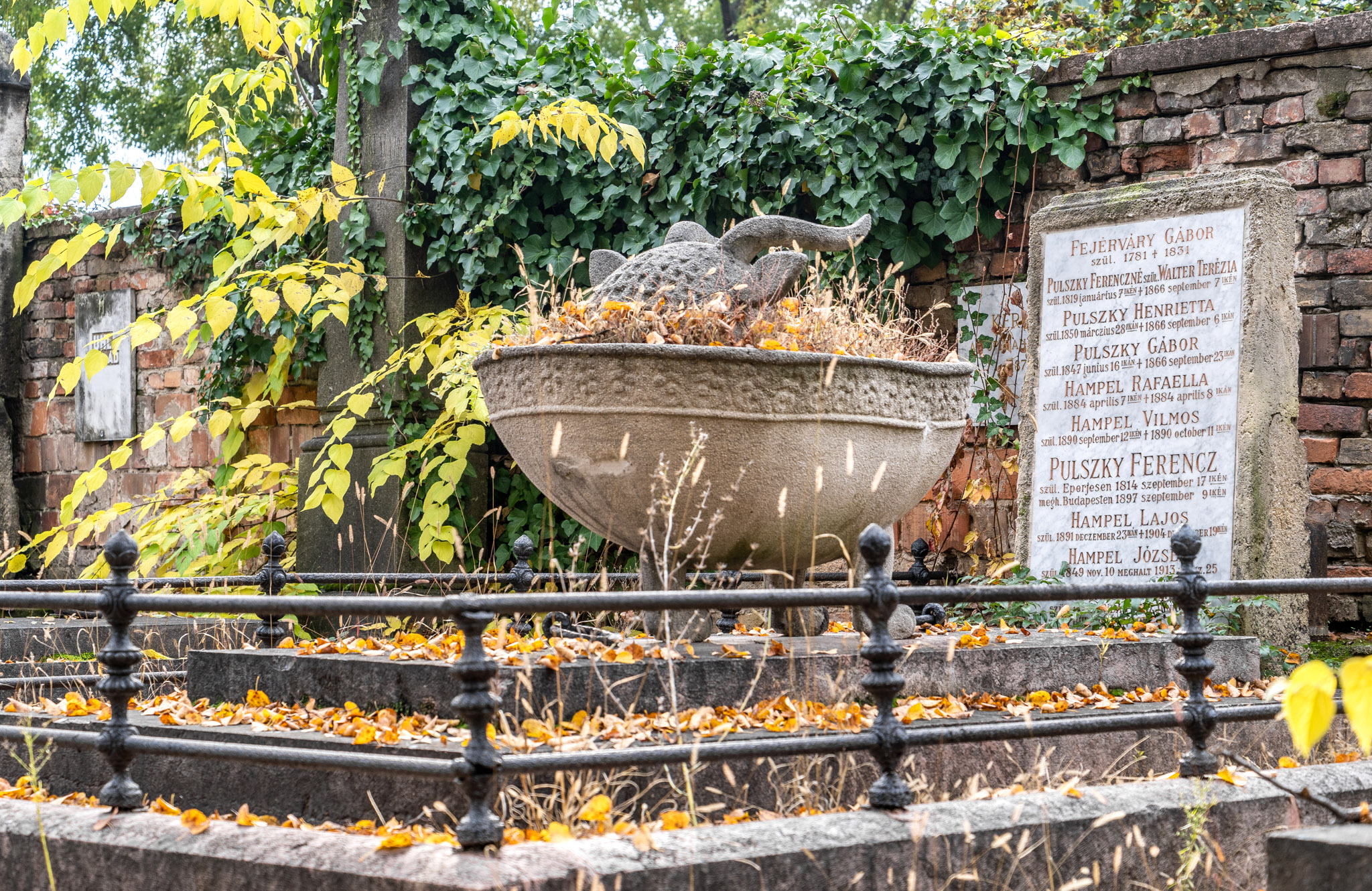
A work by Gyula Donáth marks Ferenc Pulszky's grave (Photo: Balázs Both/pestbuda.hu)
Ferenc Pulszky was a dominant cultural figure in the Austro-Hungarian Monarchy. From 1869 he served as director of the National Museum for 25 years. He was born in Eperjes (Prešov, Slovakia), in Upper Hungary. The work of Gyula Donáth was placed above the Pulszky family grave.
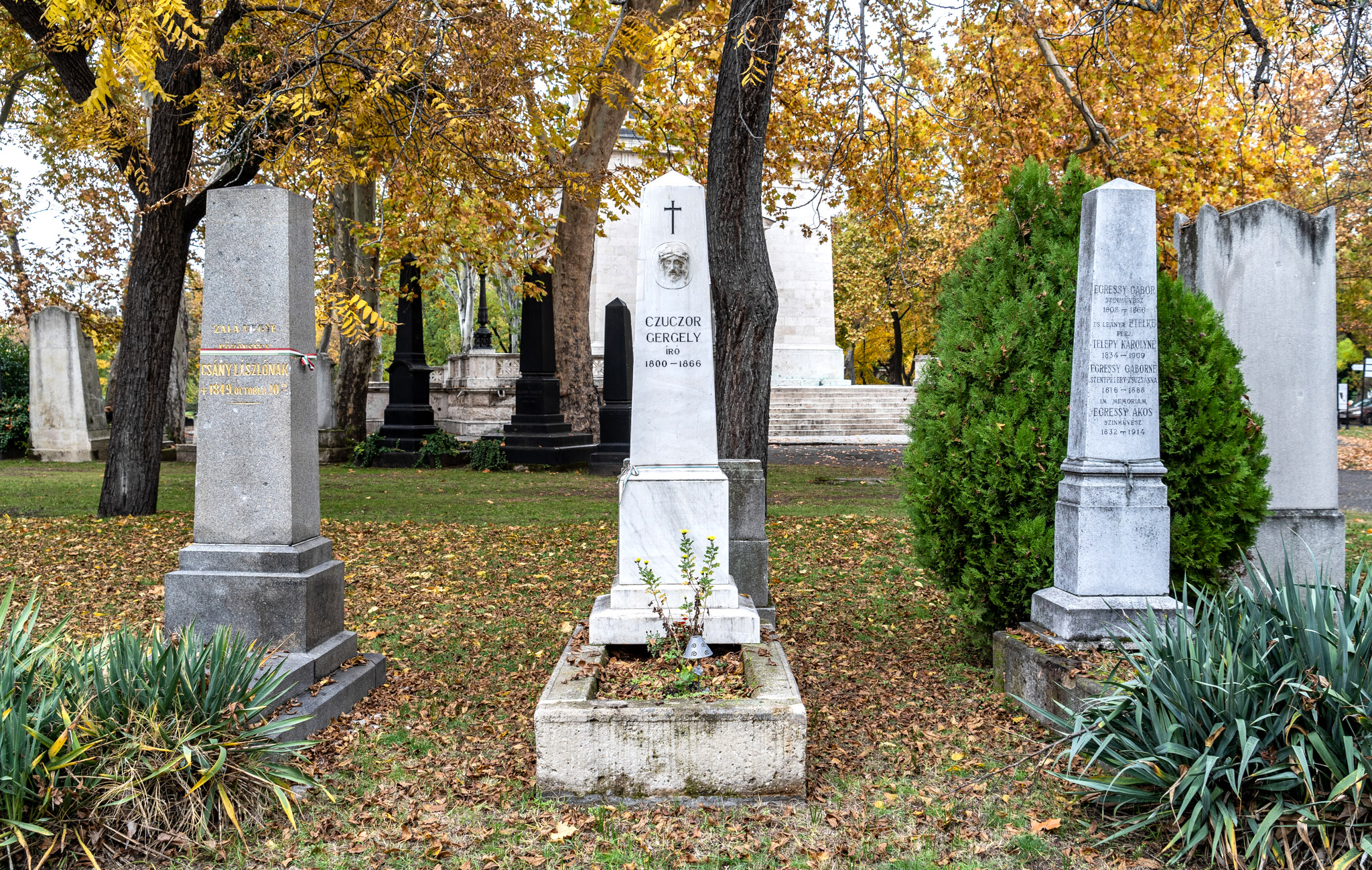
Gergely Czuczor's grave (Photo: Balázs Both/pestbuda.hu)
The final figure in this compilation was a versatile personality. Gergely Czuczor was a Benedictine monk, a poet, a linguist and a member of the Hungarian Academy of Sciences. As many others above, he was also born in Upper Hungary, in Andód (Andovce, Slovakia), nor far from Érsekújvár (Nové Zámky) in 1800. he was given the name Gergely in the Benedictine Order. He completed his studies in the north in Nyitra (Nitra) Esztergom, and Pozsony. He moved to Pest in 1851 and died here in 1866. A white marble obelisk marks his grave with the face of Christ and a cross.
Cover photo: Detail of the Fiumei Road Cemetery (Photo: Balázs Both/pestbuda.hu)

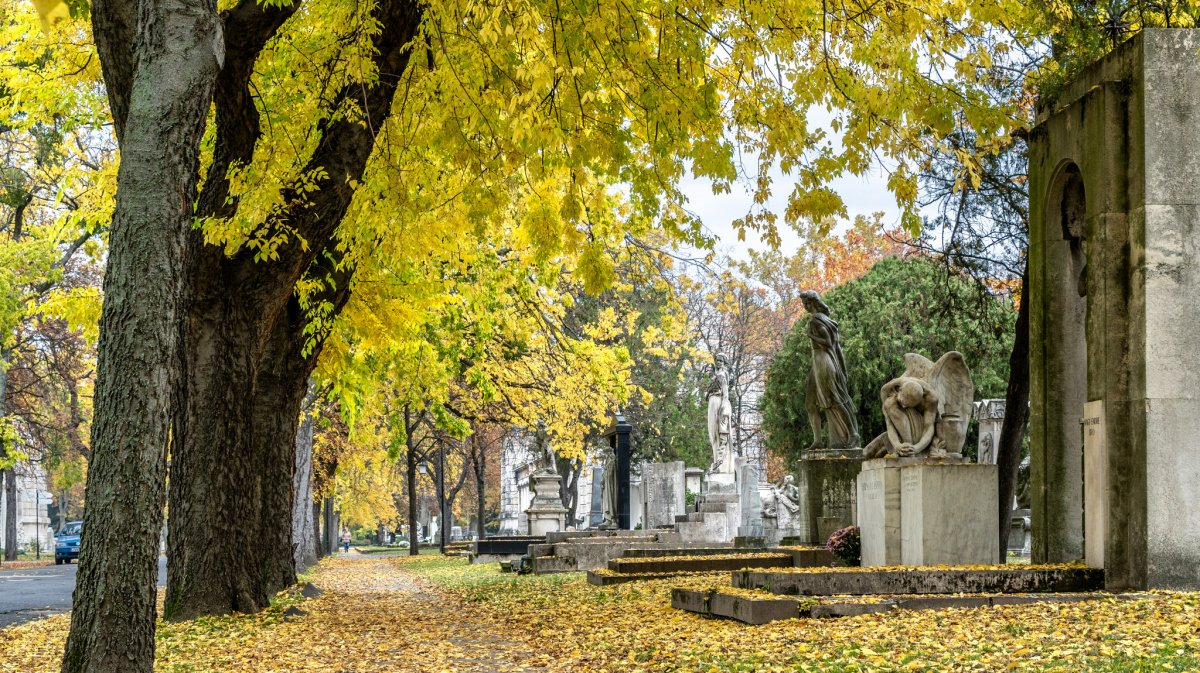

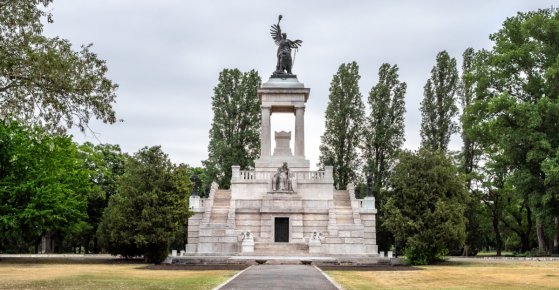
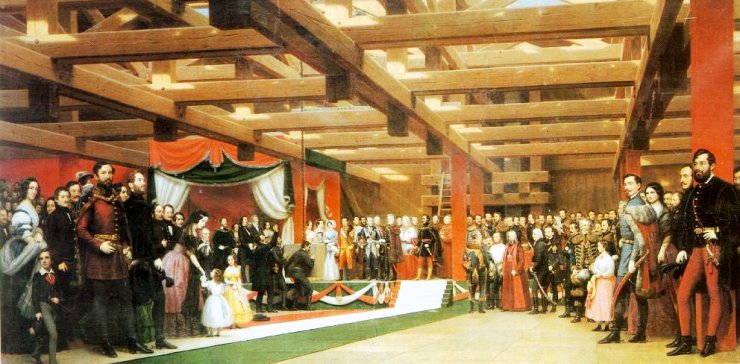
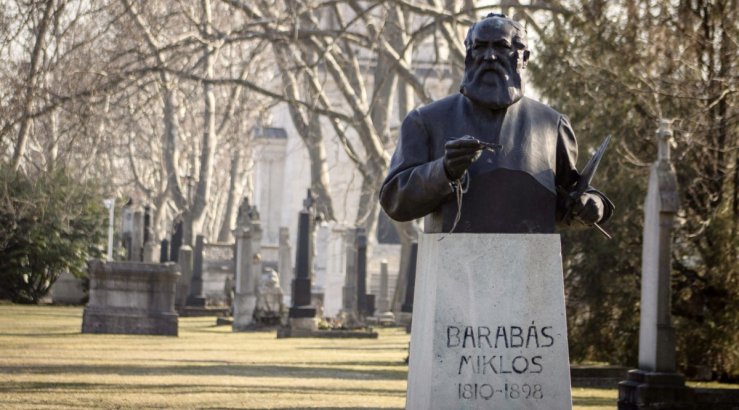

































Hozzászólások
Log in or register to comment!
Login Registration